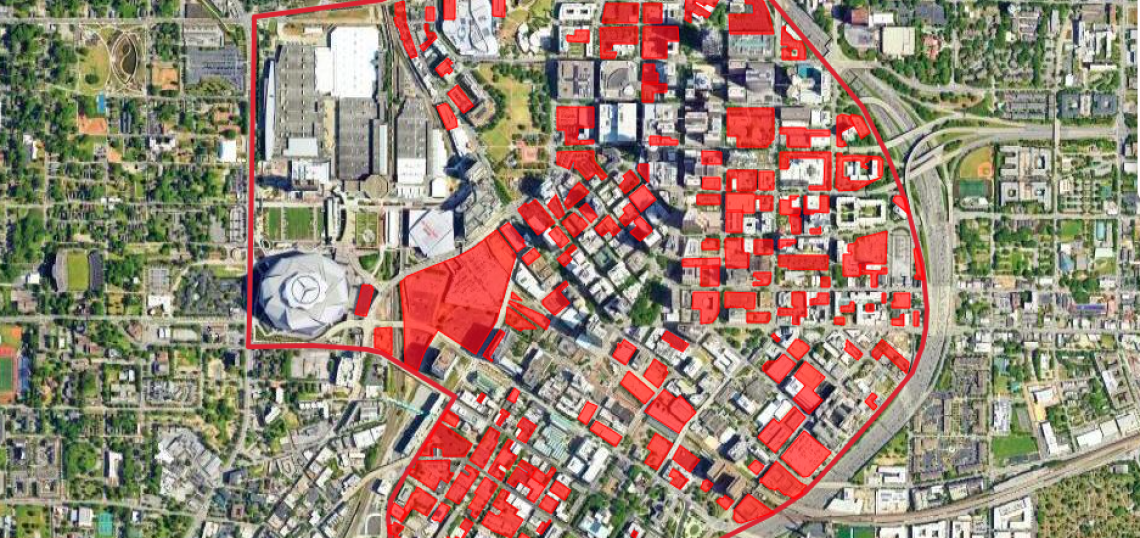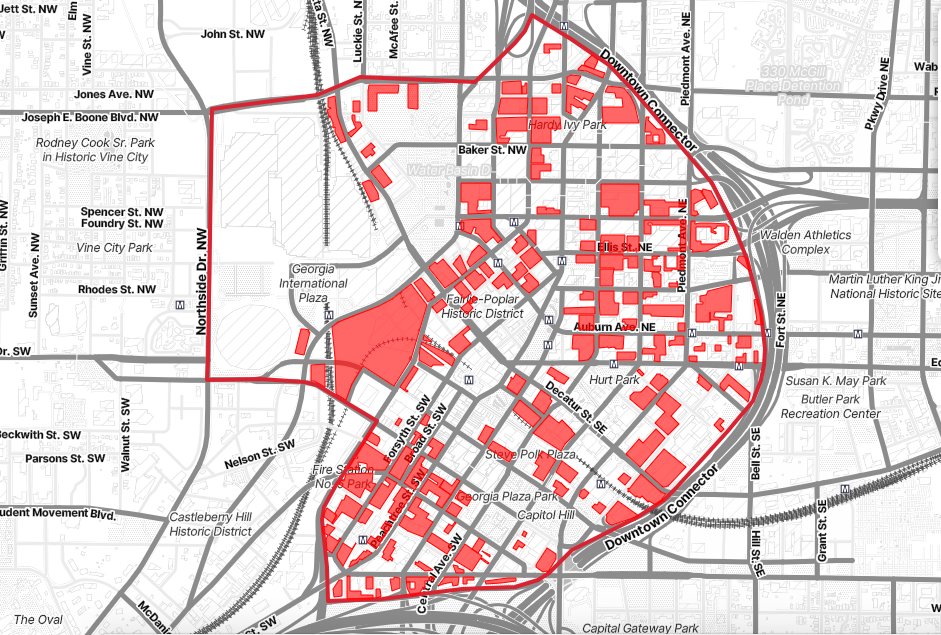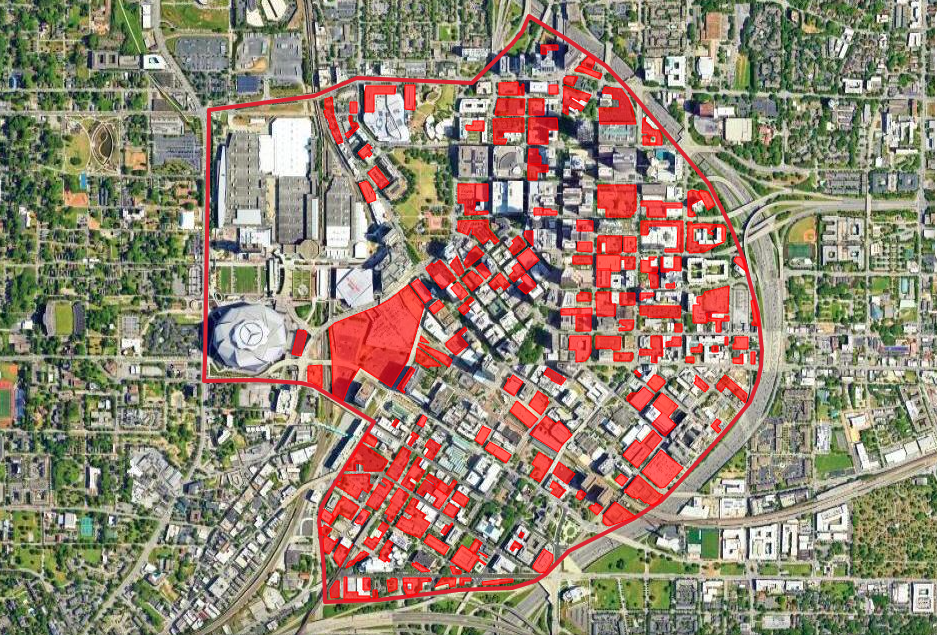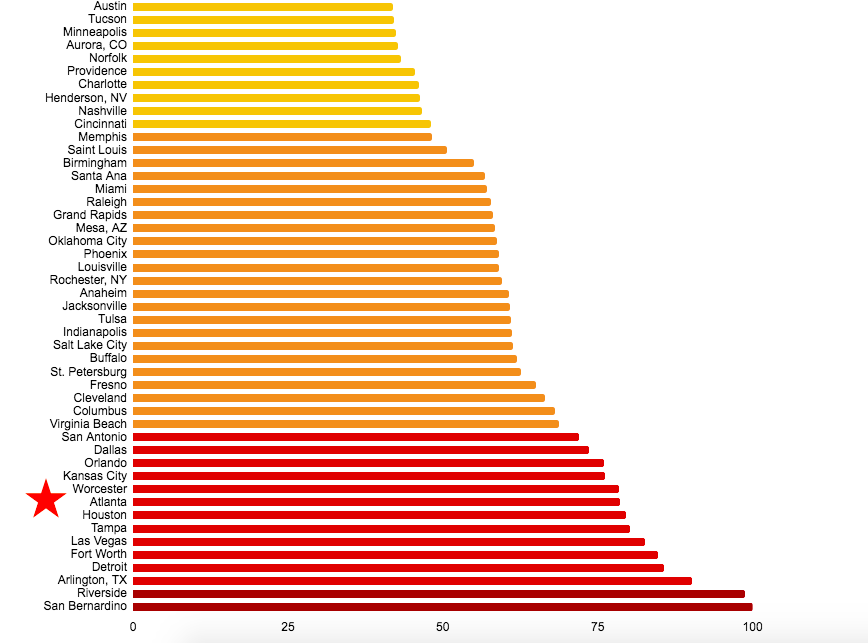As an eagle-eyed reader recently pointed out, a national analysis by a nonprofit organization pushing for more vibrant U.S. cities has found the percentage of downtown Atlanta’s land devoted to parking remains abnormally high.
That’s despite an influx of downtown development in recent years, with a wide range of commercial and residential buildings—from the College Football Hall of Fame to the new 32-story Legacy tower, to name just two—having claimed former surface lots.
The study of land use in more than 80 U.S. cities was compiled by the Parking Reform Network, a nonprofit founded in 2019 that aims to educate the public about the impact of parking policy on traffic, housing, equity, and climate change.
The lower a Parking Score, the less amount of land each city devotes to parking in its central neighborhoods, and vice versa.
According to the analysis, Atlanta’s Parking Score metric—a measure of how a city’s parking lot land use compares to other cities of a similar metropolitan area population and city type—lands near the bottom of major U.S. cities.
Downtown Atlanta’s Parking Score clocks in at 79. Only eight other cities have core areas that score lower.
By comparison, these are Parking Scores for the top five, respectively: New York City (score: 5); San Francisco (8); San Juan (11); Washington DC (12), and Chicago (14).
Analysts found that roughly 25 percent of downtown Atlanta's land is dedicated for parking uses. That’s significantly higher than the average—16 percent—for the core of metropolitan areas with 5 million people or more.
We must note the mapping (see: Centennial Yards construction progress) and some statistics (the study’s estimated City of Atlanta population) are a bit outdated. But the graphics paint a generally accurate and compelling portrait of how abundant/rampant land and structures devoted solely to parking or storing vehicles are around some of Atlanta’s oldest and most historic blocks.
Researchers found the amount of developable land by taking 75 percent of the entire area of each central city’s boundary (subtracting 25 percent to account for sidewalks and roads).
“Our research indicates that the percentage of land taken up by parking decreases,” PRN notes, “as the percentage of individuals who opt for public transportation, walking, or biking as their primary commuting methods increases.”
Below is a breakdown of where Atlanta lands on PRN's city Parking Score chart, with NYC at the top and San Bernardino (score: 100) at the opposite end of the spectrum. Note: All cities ranked below count at least 300,000 people in a metro area of 1 million and up.
...
Follow us on social media:
Twitter / Facebook/and now: Instagram
• Downtown news, discussion (Urbanize Atlanta)










